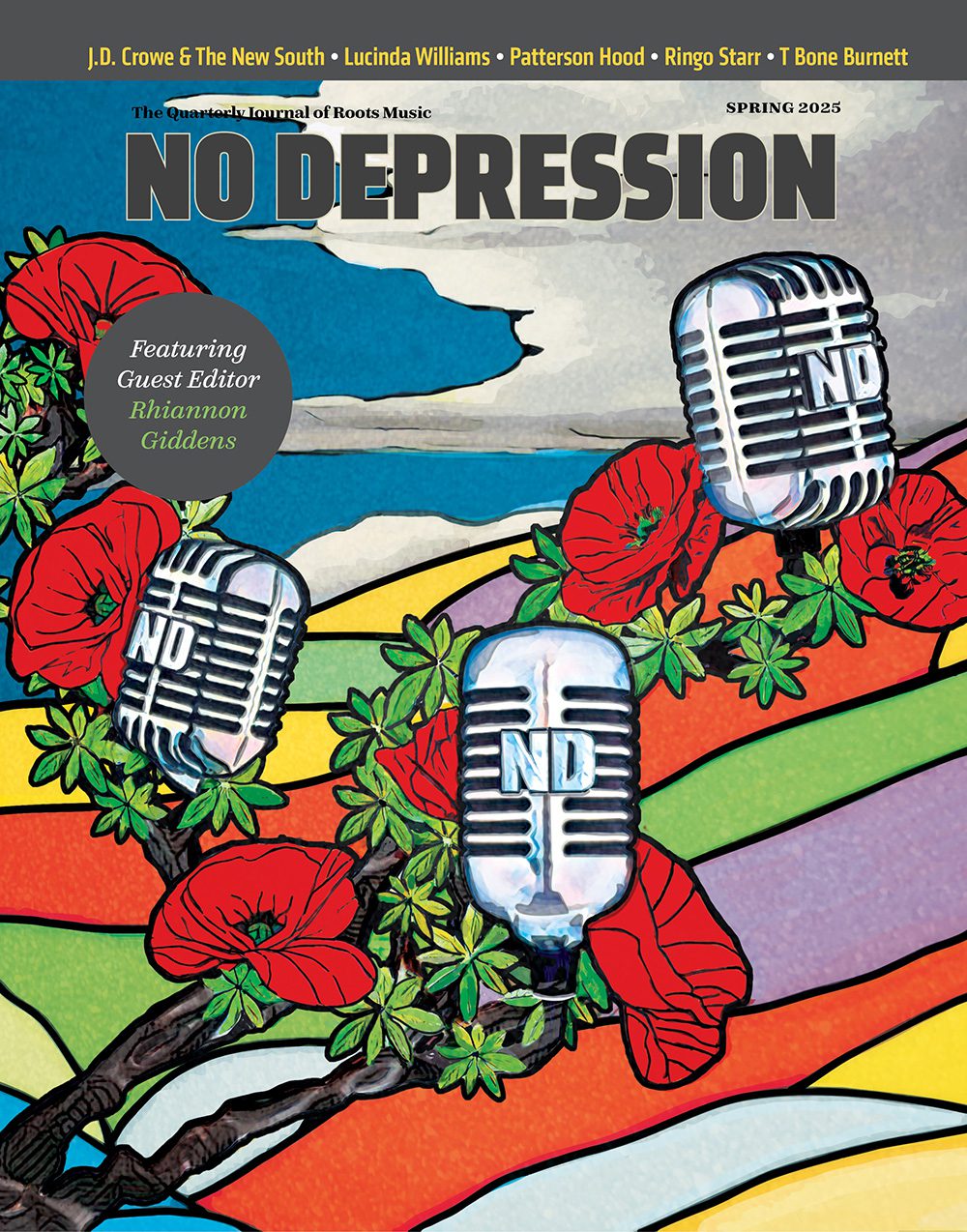Gene Vincent – The Road Is Rocky: The Complete Studio Masters 1956-1971
Gene Vincent as a father of roots-rock? Those aren’t the terms in which he’s usually discussed, but a look at his whole body of work from the perspective of 2005 sheds new light.
Meticulously engineered and all-encompassing, this completist extravaganza brings together everything the big-beat rockabilly giant recorded, from the thunderous, often astonishing records of his hitmaking years at Capitol in the 1950s, through a long-lasting post-hit afterlife during which he recorded despite alcoholism, ill health, long stretches of slim pickings as a misused has-been, and very changed pop circumstances — right up to his death at age 36 in 1971.
The sound retro rockabilly bands have generally sought to emulate (or simply imitate) is not the stripped-down mood of Elvis and the Blue Moon Boys at the Sun sessions, but, essentially, the hard-driving, then halting, big hollow sound of Gene Vincent and his Blue Caps at Capitol circa 1957-59. (That was as true for the Beatles’ heavy single version of “Revolution”, which Vincent no doubt heard on the radio in his last years, as it is for your neighborhood bar band with trick clothes today.)
The power of those early records — infectious, energizing, dangerous in sound if rarely in lyric — is self-evident on hearing, and they’re not just a set of singles, either, since Capitol made a habit of putting out Vincent albums while figuring out just what his next single ought to be.
There’s the metallic scream of guitarist Cliff Gallup, who brought some jazzy finesse to headbangers and ballads alike before being replaced in ’57 by the more twang-influenced Johnny Meeks (who delivered equally outstanding leads). There’s the superb engineering from Capitol, especially at Owen Bradley’s 16th Street studio in Nashville, but also out in Los Angeles; Deke Dickerson’s comments on the use of slap-back echo and other engineering techniques that made the Gene Vincent sound possible are a highlight of the 132-page book that comes with this 200-plus-track set.
At the center of the records was, of course, Vincent himself. Taking in his complete recorded works whole-hog certainly shows exactly where his strengths as a rock vocalist were — and just where the many records that didn’t work fell flat, too.
From the rock monsters “Be-Bop-a-Lula”, “Woman Love”, “Baby Blue”, “Git It”, “Who Slapped John?” and “Dance To The Bop” on, there was a specific tempo range in which Vincent was hard to surpass — and the tempo was medium to slow, often moving dramatically between the two, in a sort of elongated extension of his famous deep hiccup. Try having him sing faster Little Richard style, and it doesn’t work; try making him gentle, Buddy Holly style, or teen-idol wimpy, and it goes nowhere. But when they built his music around dramatic country or soul-based midtempo back-beated rhythm numbers or ballads, he could hardly go wrong.
The Brits, who virtually adopted Vincent as their own, seem not to have quite gotten it, but the infectious track that gives this box its name was, after all, a Bill Monroe tune. He does a terrific job rocking country classics such as “Blues Stay Away From Me” and “Blue Eyes Crying In The Rain” as well. Producers only rarely exploited his deft handling of dramatic, slower soul ballads in the Sam Cooke or Roy Hamilton modes (“Summertime”, “You’ll Never Walk Alone”, even “Over The Rainbow”.) The more rooted the source, for this supposed singer of pop nonsense verses, the stronger the result.
The hidden surprise treasure of this box may be the utterly forgotten country-rock sides Vincent cut with Kim Fowley at Dandelion Records in 1969 — the same moment when Rick Nelson and the Everlys were making impressive country-rock comebacks. Vincent apparently didn’t much care for the colorful biker hippie Frank Zappa, but Fowley had a bead on his abilities years before anyone had noted them. Supported by the likes of Byrd Skip Battin, “Born To Be Wild” writer Mars Bonfire, and a returning Johnny Meeks on guitars, Vincent’s magic is shockingly back on numbers such as “In The Pines”, “White Lghtnin'”, “Lonesome Whistle” and “Will The Circle Be Unbroken”. He even nails a duet on “Scarlet Ribbons” with a then-uncredited Linda Ronstadt.
It was too late; the man was sinking personally, but it’s a taste of what might have been. At the end, Gene Vincent, in talent, was still equipped to overcome being an oldies relic — but his image was so fixed it hardly got noticed. We can notice it now.


